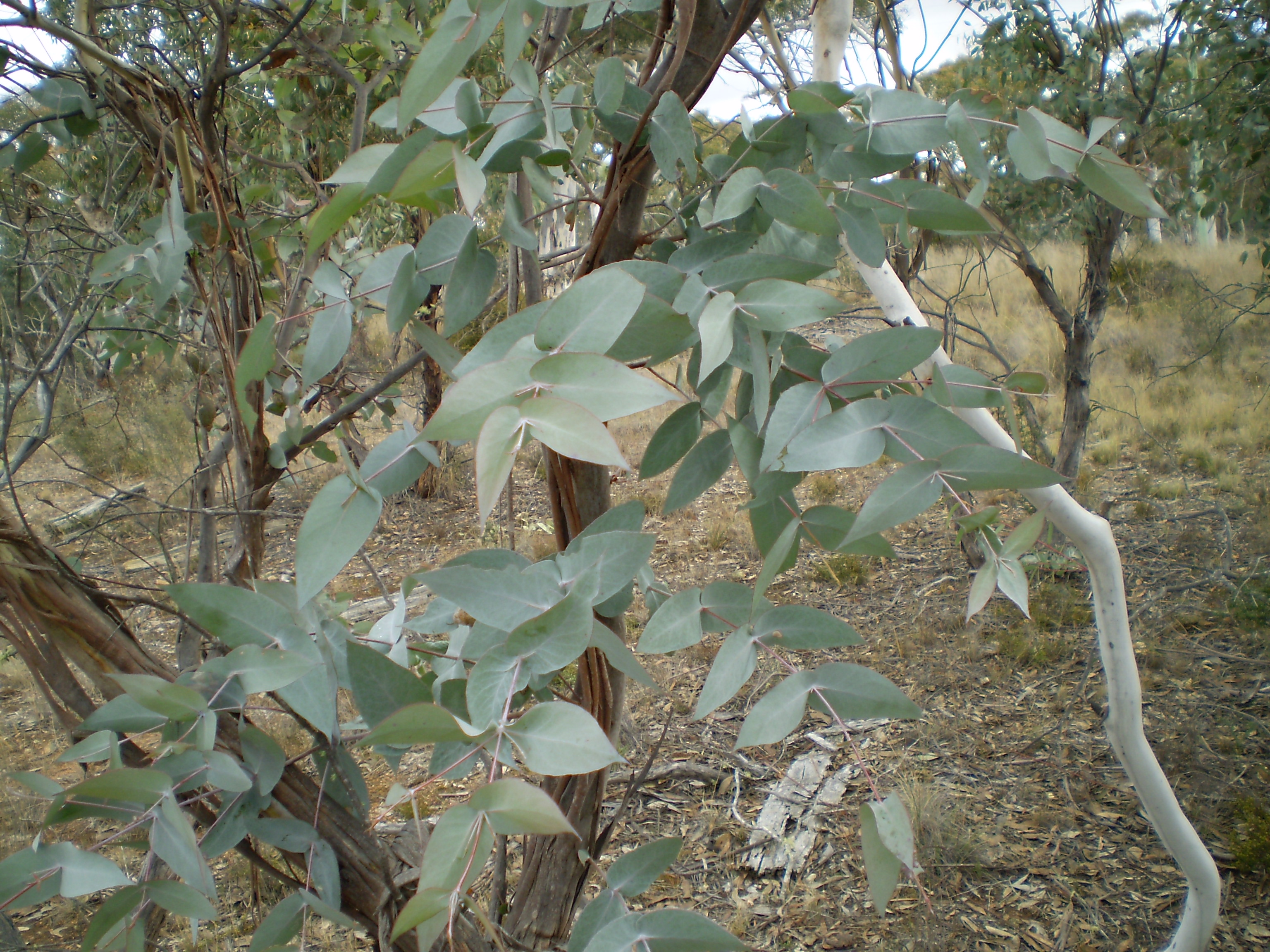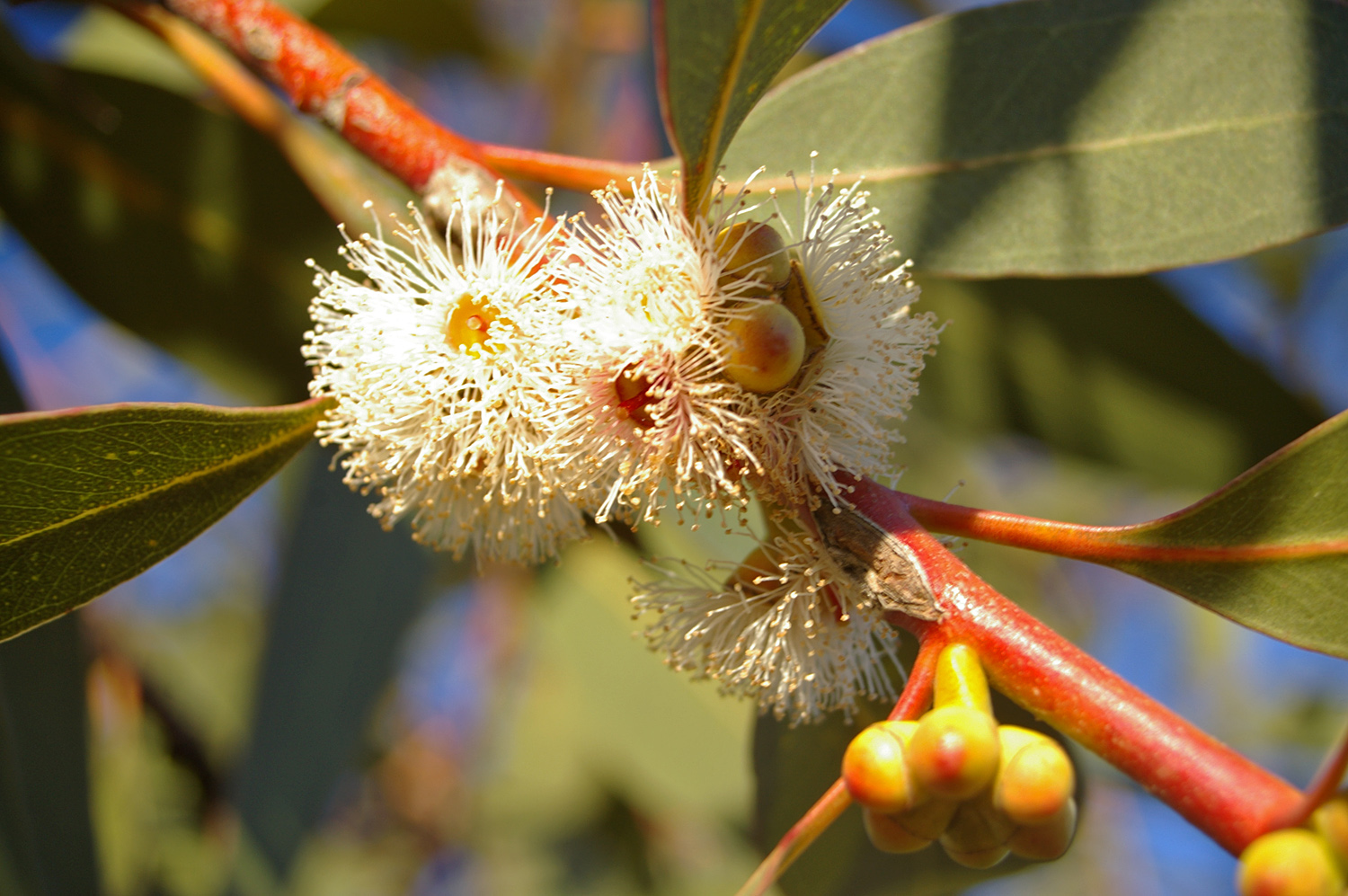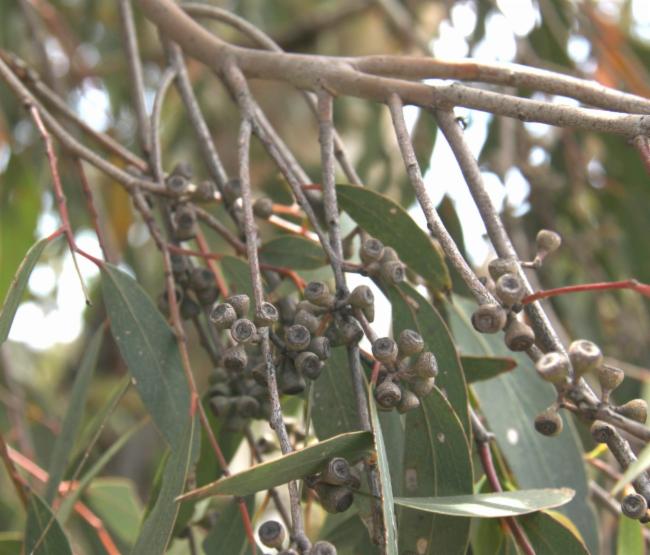Eucalyptus Dives on:
[Wikipedia]
[Google]
[Amazon]
''Eucalyptus dives'', commonly known as the broad-leaved peppermint or blue peppermint, is a species of tree that is 


endemic
Endemism is the state of a species being found only in a single defined geographic location, such as an island, state, nation, country or other defined zone; organisms that are indigenous to a place are not endemic to it if they are also foun ...
to south-eastern Australia. It has rough, finely fibrous bark on the trunk and larger branches, smooth bark above, lance-shaped or curved adult leaves, flower buds in groups of eleven or more, white flowers and cup-shaped, hemispherical or conical fruit.

Description
''Eucalyptus dives'' is a tree that grows to a height of and forms alignotuber
A lignotuber is a woody swelling of the root crown possessed by some plants as a protection against destruction of the plant stem, such as by fire. Other woody plants may develop basal burls as a similar survival strategy, often as a respons ...
. The bark on the trunk and larger branches is rough, finely fibrous and greyish and smooth grey on the thinner branches. Young plants and coppice
Coppicing is the traditional method in woodland management of cutting down a tree to a tree stump, stump, which in many species encourages new Shoot (botany), shoots to grow from the stump or roots, thus ultimately regrowing the tree. A forest ...
regrowth have leaves arranged in opposite pairs, egg-shaped to heart-shaped or curved, long and wide and sessile. Adult leaves are arranged alternately, lance-shaped to curved, the same slightly glossy or dull green on both sides, long and wide on a petiole long. The flower buds are usually arranged in groups of eleven or more in leaf axils on an unbranched peduncle long, the individual buds on a pedicel long. Mature buds are oval to club-shaped, long and wide with a conical to rounded operculum. Flowering occurs from September to January and the flowers are white. The fruit is a woody, cup-shaped, hemispherical or conical capsule, long and wide and sessile or on a pedicel up to long with the valves near the level of the rim.
Taxonomy and naming
''Eucalyptus dives'' was first formally described in 1843 by Johannes Conrad Schauer and the description was published in Walpers' book ''Repertorium Botanices Systematicae'' (Volume 2). Thespecific epithet
In Taxonomy (biology), taxonomy, binomial nomenclature ("two-term naming system"), also called binary nomenclature, is a formal system of naming species of living things by giving each a name composed of two parts, both of which use Latin gramm ...
(''dives'') is a Latin
Latin ( or ) is a classical language belonging to the Italic languages, Italic branch of the Indo-European languages. Latin was originally spoken by the Latins (Italic tribe), Latins in Latium (now known as Lazio), the lower Tiber area aroun ...
word meaning "rich" referring to the rich oil content of the leaves.
Distribution and habitat
Broad-leaved peppermint usually grows in poor, dryish soils in open forest and woodland, usually in poor, shallow, stony soils in higher places. It is found in New South Wales south from Niangala in New South Wales and in south-eastern Victoria.Uses
Essential oils
This eucalypt is a source ofEucalyptus oil
Eucalyptus oil is the generic name for distilled oil from the leaves of ''Eucalyptus'', a genus of the plant family Myrtaceae, mostly native to Australia but cultivated worldwide. Eucalyptus oil has a history of wide application, as a pharmace ...
and yields up to 12.75% by weight of partly dried leaves. Some forms of ''E. dives'' contain mostly the essential oil
An essential oil is a concentrated hydrophobic liquid containing volatile (easily evaporated at normal temperatures) chemical compounds from plants. Essential oils are also known as volatile oils, ethereal oils, aetheroleum, or simply as the ...
s phellandrene
Phellandrenes are organic compounds with the formula . They have a similar molecular structure and similar chemical properties. α-Phellandrene and β-phellandrene are cyclic monoterpenes and are double-bond isomers. In α-phellandrene, both dou ...
and piperitone, some also contain eucalyptol and the remainder eucalyptol, terpineol
Terpineol is any of four isomeric monoterpenoids. Terpenoids are terpene that are modified by the addition of a functional group, in this case, an alcohol. Terpineols have been isolated from a variety of sources such as cardamom, cajuput oil, ...
, geraniol
Geraniol is a monoterpenoid and an alcohol. It is the primary component of citronella oil and is a primary component of rose oil and palmarosa oil. It is a colorless oil, although commercial samples can appear yellow. It has low solubility i ...
and citral
Citral is an acyclic monoterpene aldehyde. Being a monoterpene, it is made of two isoprene units. Citral is a collective term which covers two geometric isomers that have their own separate names; the ''E''-isomer is named geranial (''trans''- ...
.
In the early post-war
A post-war or postwar period is the interval immediately following the end of a war. The term usually refers to a varying period of time after World War II, which ended in 1945. A post-war period can become an interwar period or interbellum, ...
years there was a shortage of menthol
Menthol is an organic compound, specifically a Monoterpene, monoterpenoid, that occurs naturally in the oils of several plants in the Mentha, mint family, such as Mentha arvensis, corn mint and peppermint. It is a white or clear waxy crystallin ...
and several manufacturers were able to produce this oil from piperitone but gradually this method was displaced by production of the oil from ''Mentha arvensis
''Mentha arvensis'', the corn mint, field mint, or wild mint, is a species of flowering plant in the mint family Lamiaceae. It has a circumboreal distribution, being native to the temperate regions of Europe and western and central Asia, east to ...
''. The form rich in cineole is still harvested in New South Wales while the seeds imported into Africa are mostly from the piperitone/phellandrene form.
References
* Boland, ''et al.'', ''Eucalyptus Leaf Oils - Use, Chemistry, Distillation and Marketing'', . {{DEFAULTSORT:Eucalyptus dives Bushfood dives Flora of the Australian Capital Territory Flora of New South Wales Flora of Victoria (state) Myrtales of Australia Trees of Australia Plants described in 1843 Taxa named by Johannes Conrad Schauer